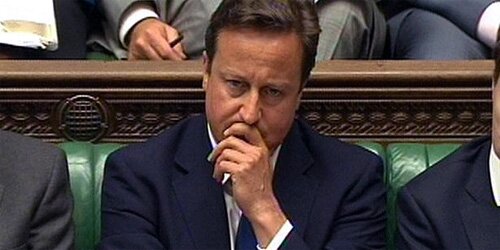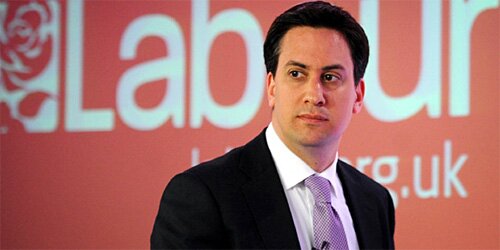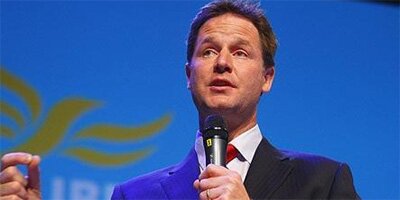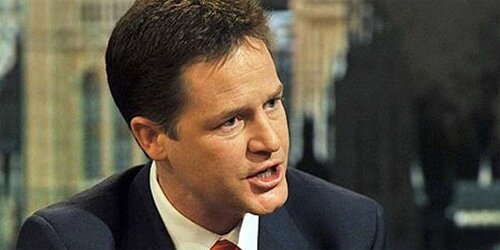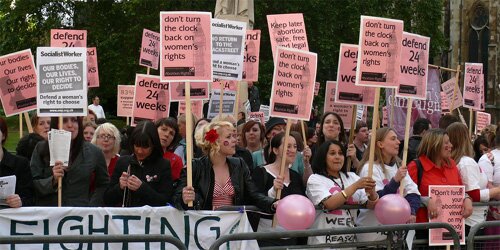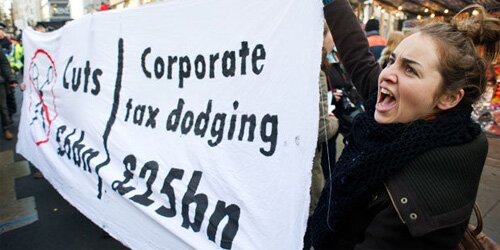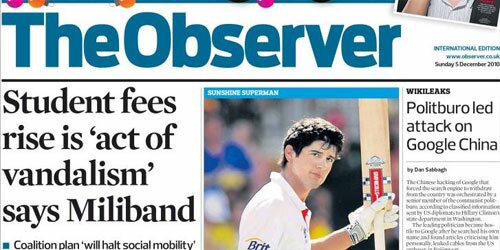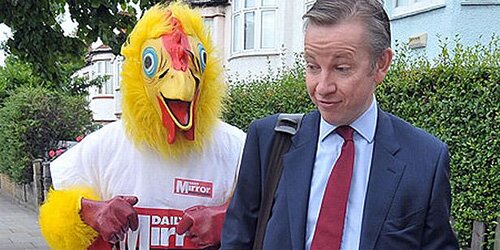Employment figures betray a weakening labour market
11:00 am - October 14th 2010
| Tweet | Share on Tumblr |
The BBC reported yesterday:
Across the UK the number of people employed increased by 178,000 in the three months to August, the ONS said.
Sounds good. A more detailed look at the data, however, suggests a bleaker picture.
First, of those 178,000, 43,000 are the newly self-employed. A sector that accounts for only 10% of employment accounted for 24.2% of employment growth.
Now, if this is an increase in entrepreneurial spirit, fantastic. I suspect, however, that it is partly people re-labeling themselves as freelancers or consultants, or setting up tiny businesses that don’t pay as well as full-time jobs. Such people are frustrated employees.
Secondly, a further 123,000 net new jobs are part-time. More than half of these new workers – 65,000 – are working part-time because they can’t find a full-time job.
Thirdly, the number of full-time employees fell by 17,000 between March-May and June-August.
None of this is a sign of a strong labour market – quite the opposite. Worse still, things seem to have gotten worse just recently. If we compare the May-July data to the June-August data – which is not in today’s press release but readily available in the time series archive – the number of full-time employees fell by 52,000, the second biggest monthly fall since June 2009.
This is consistent with the rise in employment associated with Q2’s boomlet in GDP now going into reverse – a possibility corroborated by the rise in claimant count unemployment in the last two months and by the 30,000 fall in the number of vacancies between Q2 and Q3. It is also, however, consistent with the possibility that actual employment never really increased that much and that the figures were flattered by a bit of luck in the sampling process.
Given all these signs of weakness, it shouldn’t be surprising that the wider measure of unemployment – which adds to the formal unemployed part-timers who’d like a full-time job and the economically inactive who want to work – rose in June-August. This now stands at 5.99 million, or 15% of the 16-64 year-old population.
Another thing. 44,000 of the 178,000 rise in employment was in the over-65 age group, even though these account for only 2.8% of all employment. This suggests there are growing numbers of people wanting to top up their pensions with work – which is hardly a sign of a prospering economy.
| Tweet | Share on Tumblr |  |
Chris Dillow is a regular contributor and former City economist, now an economics writer. He is also the author of The End of Politics: New Labour and the Folly of Managerialism. Also at: Stumbling and Mumbling
· Other posts by Chris Dillow
Story Filed Under: Blog ,Economy
Sorry, the comment form is closed at this time.
Reader comments
Many thanks for that illuminating – if thoroughly depressing – analysis of the current job market.
Any news yet on whether private sector spending – consumer expenditure, business investment and net exports – is poised to fill the gap in aggregate demand for goods and services that will be created by the cuts in public spending?
The latest trade gap figures released a couple of days back were disappointing:
“Britain’s trade deficit narrowed in August, but by slightly less than expected, with the balance aided by a significantly larger drop in imports than in exports. . . economists noted there was little sign that the weakness of sterling was doing much to boost external demand for UK-produced goods.”
http://www.ft.com/cms/s/0/8105e168-d5e1-11df-94dc-00144feabdc0.html
Reactions: Twitter, blogs
-
Liberal Conspiracy
Employment figures betray a weakening labour market http://bit.ly/ckJEvl
-
Jason Monastra
Employment figures betray a weakening labour market | Liberal …: This is consistent with the rise in employment … http://bit.ly/cqA4NY
-
Hazico_Jo
RT @libcon: Employment figures betray a weakening labour market http://bit.ly/ckJEvl
-
Martell Thornton
Employment figures betray a weakening labour market | Liberal …: Given all these signs of weakness, it shouldn't… http://bit.ly/cgBxfn
-
Naadir Jeewa
Reading: Employment figures betray a weakening labour market: The BBC reported yesterday:
Across the UK the number… http://bit.ly/bgJtmb -
Ben Oliver
Employment figures betray a weakening labour market | Liberal … http://bit.ly/99jDqv
-
tom serona
Employment figures betray a weakening labour market | Liberal …: None of this is a sign of a strong labour marke… http://bit.ly/cFls04
-
JobsDirectBlog.com
#Employment Employment figures betray a weakening labour market | Liberal … http://bit.ly/9EEsej http://bit.ly/9n3Ifc
-
Hire Me T-Shirt
#Employment #HireMe Employment figures betray a weakening labour market | Liberal … http://bit.ly/9EEsej http://bit.ly/djw8LQ
-
MervynDinnen
'Employment figures betray a weakening labour market' – http://bit.ly/9uNSAn >> some really interesting analysis (via @libcon )
-
JeremyJacobs
RT @MervynDinnen: 'Employment figures betray a weakening labour market' – http://bit.ly/9uNSAn >> some interesting analysis (via @libcon )
-
charles
Employment figures betray a weakening labour market | Liberal …: Many thanks for that illuminating – if thorough… http://bit.ly/aVAt3V
-
MervynDinnen
Are the employment figures all they seem?? http://bit.ly/9uNSAn
-
thabet
Employment figures betray a weakening labour market http://ow.ly/2UsyV
Sorry, the comment form is closed at this time.
NEWS ARTICLES ARCHIVE





